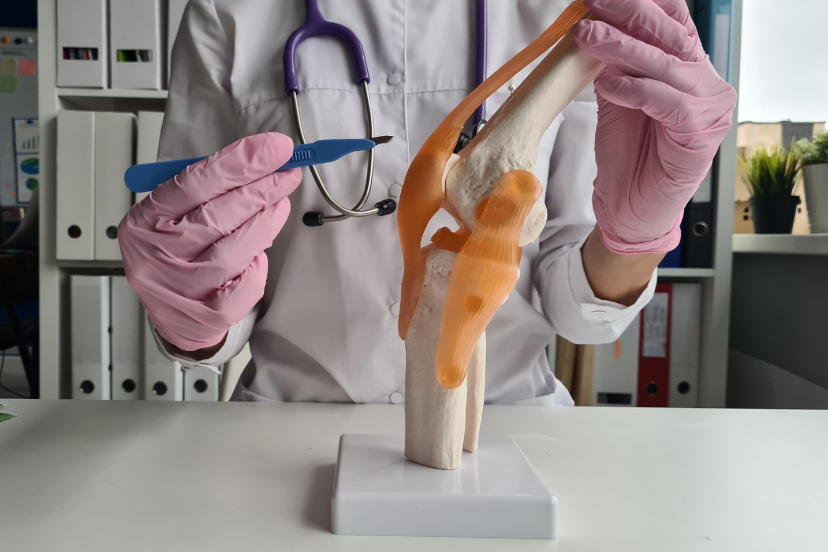Osteoporosis and Joint Mobility: Flex Those Bones
Osteoporosis and Joint Mobility
When you think about osteoporosis, what usually comes to mind? Many people focus on bone density and fracture risk, but osteoporosis also impacts joint mobility. Understanding this relationship is crucial for managing the condition effectively and maintaining a good quality of life. Let’s delve into how osteoporosis affects joint mobility and explore practical strategies for managing these challenges.
Understanding Osteoporosis
Osteoporosis is a condition characterized by weakened bones that become more susceptible to fractures. This bone deterioration happens gradually and often goes unnoticed until a fracture occurs. But did you know that osteoporosis also affects the joints? As bones lose density, they can cause changes in the joints that might lead to stiffness and reduced mobility.
What is Osteoporosis?
Osteoporosis is a systemic skeletal disease where bones become porous and brittle. It results from an imbalance between bone resorption and bone formation. The bones’ density decreases, making them fragile and more likely to break. While fractures are a well-known risk, the impact on joint mobility is equally significant.
How Does Osteoporosis Affect Joints?
The weakened bones associated with osteoporosis can lead to joint problems. For instance, when bones are less dense, they can lose their normal alignment, which may strain the surrounding joints. This misalignment can cause discomfort and reduce the range of motion.
Symptoms of Osteoporosis Affecting Joints
Symptoms might include stiffness, pain, and reduced flexibility in the joints. Activities that were once easy may become challenging. It’s essential to recognize these symptoms early to address them before they significantly impact your daily life.
Joint Mobility and Its Importance
Joint mobility refers to the range of motion in the joints. Good joint mobility is crucial for performing daily activities comfortably and efficiently. Osteoporosis can significantly impact this, making it essential to understand and address these challenges.
Why Joint Mobility Matters
Maintaining joint mobility helps you stay active and independent. It allows you to move freely, participate in various activities, and avoid falls and fractures. Reduced joint mobility can lead to a sedentary lifestyle, which may worsen osteoporosis and related health issues.
Impact of Reduced Joint Mobility
When joint mobility is reduced, even simple tasks can become difficult. This limitation can lead to muscle weakness, poor posture, and an increased risk of falls. It’s vital to address these issues to maintain a good quality of life.
Managing Osteoporosis and Joint Mobility
Effectively managing osteoporosis and its impact on joint mobility requires a multifaceted approach. From medication and physical therapy to lifestyle changes, several strategies can help improve joint function and overall well-being.
Medical Treatments for Osteoporosis
Several medications are available to treat osteoporosis. These medications aim to strengthen bones and prevent further deterioration. Common treatments include bisphosphonates, hormone replacement therapy, and newer drugs like monoclonal antibodies. Always consult your healthcare provider to find the best treatment for your condition.
Physical Therapy and Exercise
Physical therapy can be beneficial for improving joint mobility. A physical therapist can design a personalized exercise program that focuses on strengthening muscles around the joints and improving flexibility. Regular, low-impact exercises like swimming and walking can help maintain joint function without putting excessive stress on the bones.
Diet and Nutrition
A balanced diet rich in calcium and vitamin D is essential for bone health. Foods like dairy products, leafy greens, and fortified cereals can help maintain bone density. Additionally, staying hydrated and consuming a diet low in processed foods can support overall health and well-being.
Lifestyle Modifications
Making lifestyle changes can also impact joint mobility. For instance, using assistive devices like canes or walkers can help with stability. Additionally, adopting good posture habits and avoiding high-impact activities can reduce strain on the joints.
Alternative Therapies
Some people find relief from joint pain and stiffness through alternative therapies like acupuncture or massage. While these treatments can provide symptomatic relief, they should complement, not replace, conventional medical treatments.
Frequently Asked Questions (FAQs)
1. What are the first signs of osteoporosis affecting joint mobility?
Early signs include joint stiffness, pain during movement, and reduced flexibility. If you notice these symptoms, consult your healthcare provider for a comprehensive evaluation.
2. Can osteoporosis be prevented?
While you can’t entirely prevent osteoporosis, you can reduce your risk by maintaining a healthy diet, staying active, and avoiding smoking and excessive alcohol consumption.
3. Are there specific exercises for improving joint mobility in osteoporosis patients?
Yes, low-impact exercises like swimming, cycling, and stretching can help improve joint mobility. Consult with a physical therapist to create a safe and effective exercise plan.
4. How does osteoporosis impact daily activities?
Osteoporosis can make everyday activities more challenging due to reduced joint mobility and increased risk of fractures. It’s crucial to adapt your activities and use assistive devices if needed.
5. What role does nutrition play in managing osteoporosis?
A diet rich in calcium and vitamin D supports bone health and can help manage osteoporosis. Foods like dairy products, green leafy vegetables, and fortified cereals are beneficial.
7. Can alternative therapies be effective for osteoporosis-related joint pain?
Alternative therapies can provide symptomatic relief but should be used alongside conventional treatments. Always discuss these options with your healthcare provider.
Conclusion
Osteoporosis and joint mobility are intricately linked, and understanding their relationship is vital for managing the condition effectively. By combining medical treatments, physical therapy, lifestyle modifications, and a balanced diet, you can improve your joint mobility and enhance your overall quality of life. Remember, early intervention and a proactive approach can make a significant difference in managing osteoporosis and maintaining mobility.
Taking control of your bone health is not just about preventing fractures—it’s about enhancing your overall well-being and enjoying a more active, fulfilling life. So, stay informed, stay active, and keep your joints moving!




